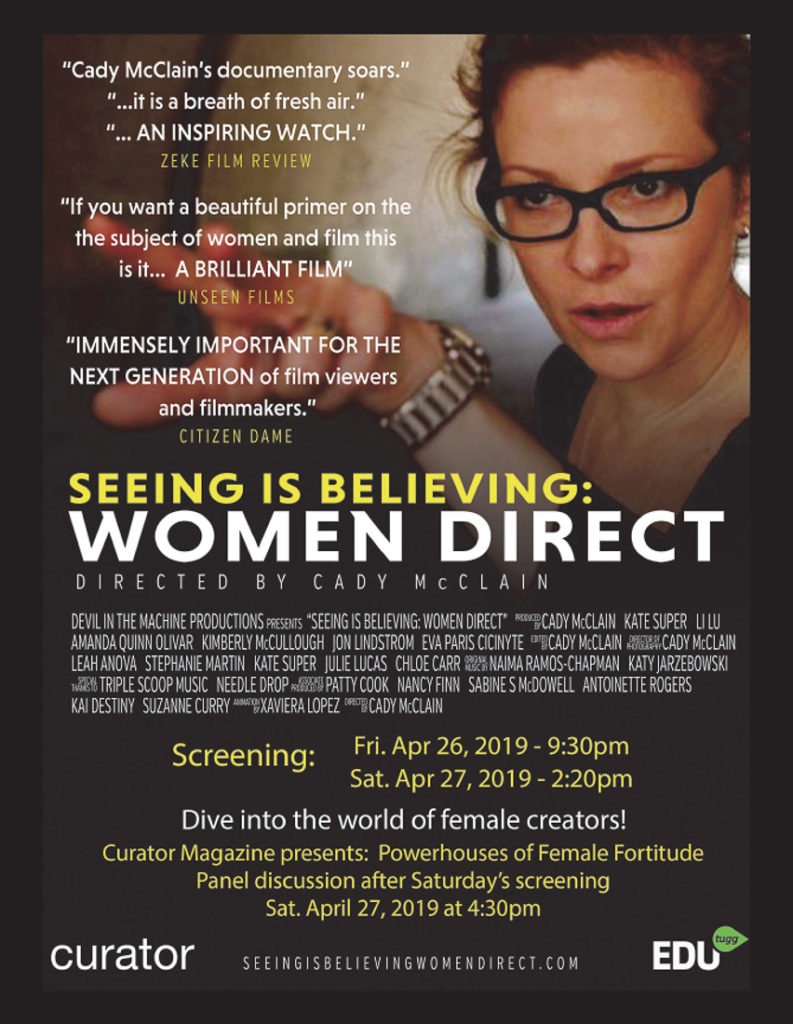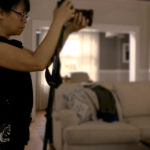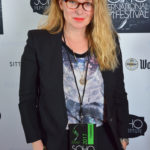A very good point was made by director/producer Cady McClain in our interview about her movie Seeing Is Believing: Women Direct. She points out many unspoken truths about directors and the movies they make. One of her poignant statements (excuse me as I paraphrase) is as a director, the importance of making your project the film “YOU want to see.” Hers was a long, complex journey before receiving the title “Director.” Discouraged by her mother—rather ordered—against directing, McClain circuitously arrived here anyway! Through a variety of brief careers—even recording a CD—Cady McClain carved a career for herself as a thoughtful, passionate, transparent filmmaker. Who’s in the documentary? Kimberly Peirce (Boys Don’t Cry), Li Lu (There is a New World Somewhere), Betty Thomas (The Brady Bunch Movie), documentarian Anne Makepeace, Meera Menon (director of Equity), Lesli Linka Glatter and others.
Seeing Is Believing: Women Direct is an AWIAFF 2019 Official Selection, I saw a bit of this movie, and “wow!”: I am so looking forward to experiencing it on the big screen during the Artemis Women In Action Film Festival at Laemmle Santa Monica.
Interview by Kaylene Peoples
Responses by: Director/Producer Cady McClain, Producers Li Lu, Jon Lindstrom, Kate Super, and Amanda Quinn Olivar
Kaylene Peoples: Tell me a little about your film and what inspired you to make Seeing Is Believing?
Cady McClain: I had been so “warned off” directing as a young woman that I ended up studying any art that was close to it: history of film, fine art painting, collage, music, writing, theater, photography… you name it I studied it. Once I finally did dive into directing I simply couldn’t get enough. I directed and produced two short films within a matter of months. It was one of the most joyous experiences of my creative life. So of course I started to try and strategize how I might make a career in it. That was 2015, when all the statistics started hitting the news. I felt hit and with a hard choice: give up or get busy? As I was contemplating this, the idea just came from out of nowhere. I needed to make a documentary on female directors that would help keep women in the game as well as give the ones just getting started the information they needed to succeed. Right after I had the idea, I met a woman named Robin Green who had worked behind the scenes as a producer in television for many years. I told her my idea about the doc. She fixed me with a very strong and clear look and said, “DO IT.” It felt like a command, a missive. When she said that there was no doubt that a film like the one I wanted to make needed to exist. Her eyes and her clear intention said it all.
I decided I wanted to make the kind of film that I needed to see. One that didn’t focus totally on the obstacles but inspired me to keep going. I wanted to see women at all levels of directing and all forms of work – theater, web series, TV, film, music videos, commercials . . . you name it. I wanted to give both myself and the audience tools to use as well as encouragement and insights into the profession. From the feedback I’ve been getting I think I’ve succeeded pretty well in my efforts. There’s nothing I like better than to hear someone say, “After watching your film I realized, I can really do this!” or “I loved seeing your film. It was really positive and I didn’t expect that!” That makes me really happy.
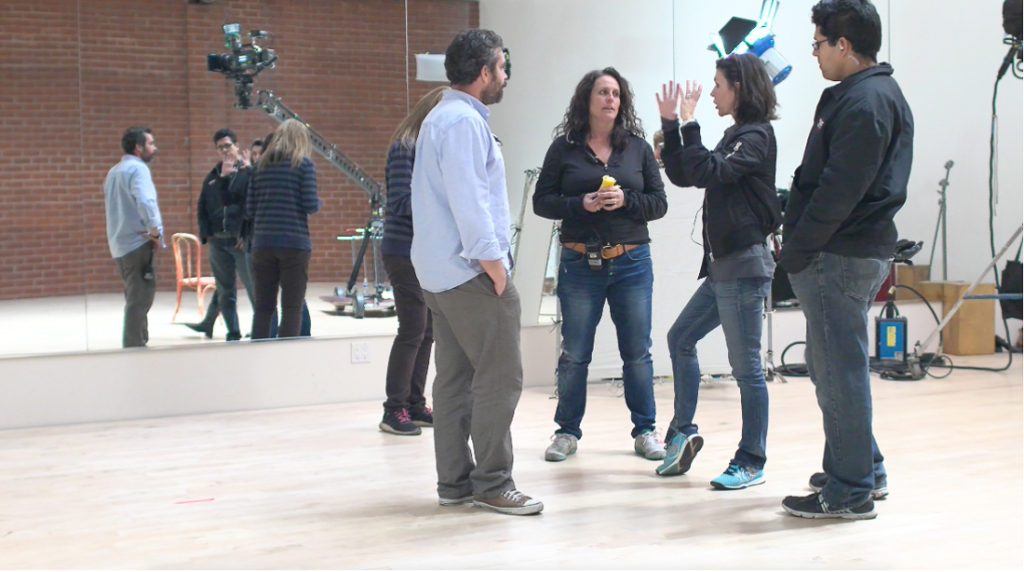
Kaylene: How long did it take to complete the film? What was it shot on? Tell me about the filmmaking process.
Cady McClain: I started the process in 2015 and finished at the end of 2018, so you could say all in all it’s been three years. Not long by some standards but it’s been an incredibly intense journey. In part because I challenged myself to direct other projects while I was doing this one, so I could personally test out the advice I was getting and make sure that truly worked (spoiler alert: it does!) In the three years I was shooting, editing, and in post, I also directed two web series, three short films, and a filmed play, as well as doing all the fundraising, crowdfunding, and paperwork, while volunteering for various women’s directing groups in order to show support. I think my deep desire to make a serious change kept me very motivated, despite the exhaustion factor that definitely kicked in.
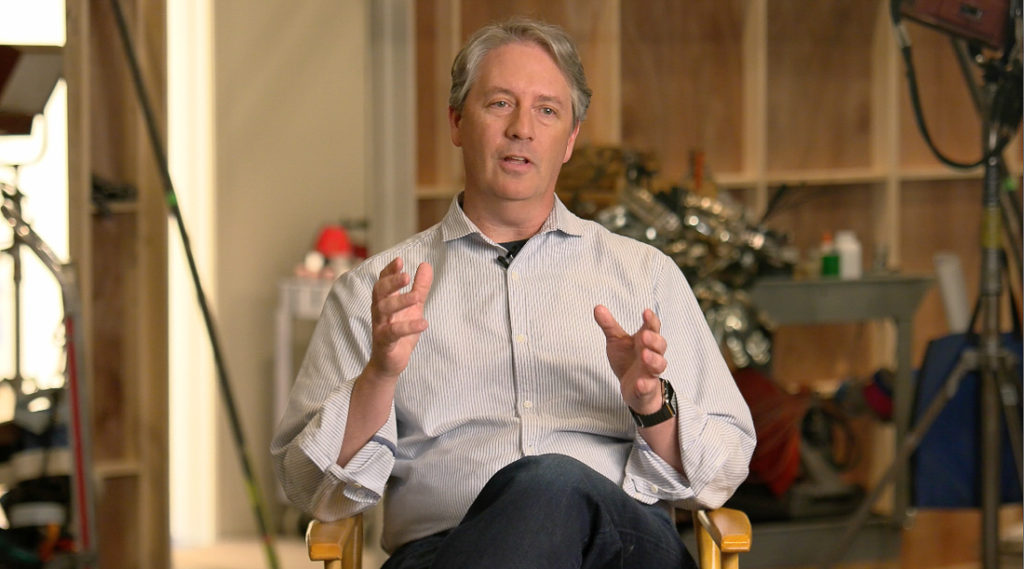
In terms of the actual process of the nuts and bolts of it all, I started by purchasing a JVC LS-300 camera (which can adapt to any lens and shoots on 4K) and a Sennheiser Lav. I already had a basic lighting kit from having to do auditions. I wasn’t interested (and couldn’t afford) a large crew. I wanted to be as much of a “one woman band” as I could. Most interviews came via friends, family, or word of mouth. The generosity and willingness of these people was really humbling, and only drove me to bring my best on every level.
I did bring on a couple of DPs [director of photography] who happened to be women, including the amazing Leah Anova, whom I adore and cannot wait to work with again, during times when the exhaustion or the “overwhelm” factor kicked in, as it did with folks like John Wells at his office in Paramount Studios. Yeah, I wasn’t gonna try to pull that off alone!
Despite a very successful crowdfunding campaign, I realized I couldn’t afford an editor so I taught myself more about how to edit on FCPX [Final Cut Pro X]. I know, it’s not the “industry standard” but if it gets you were you need to go, I say there is no shame in taking the bus.
For a while I thought I might try and serialize my film rather than make a single narrative. The day I realized that a making a series is like making a five hour film was another wake up call. So I started small: I edited three of the women into a short film and began submitting that around. It got some nice recognition and even won a Jury award at the Newport Beach Film Festival. Then the SOHO Film Festival called and asked me to make it into a full length feature in three weeks. They said if it could make it into an hour it would qualify, so I did (talk about a stressful three weeks) and it actually won the Audience Award for all films at the festival! Then a distributor came around and asked if I could make it longer and that was when I dug in and said, “if I’m going to do that I might as well make the film I had originally intended to make,” and dug into the edit one last time. That is the film that is screening at the Artemis Film Festival in April, and I couldn’t be more proud of it.
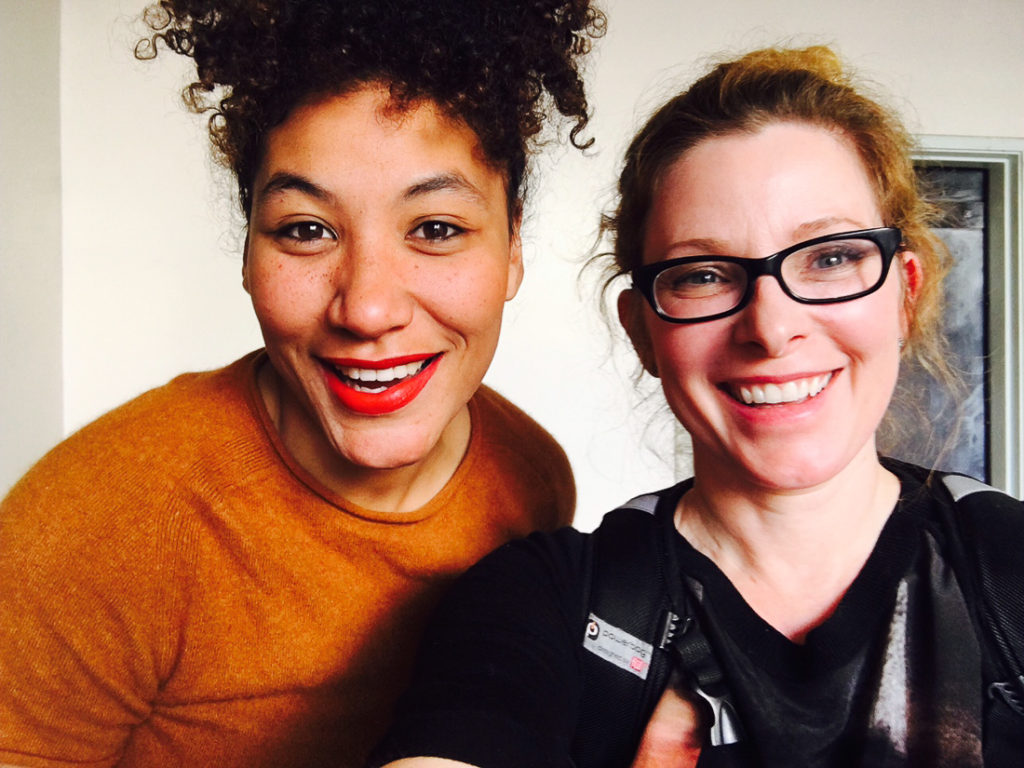
Kaylene: Let’s talk about the cast and crew. Tell me about who was involved and particularly your key players.
Cady McClain: There are four leading interviews that bind the structure of the film. The first is Lesli Linka Glatter, whom Kimberly McCullough introduced me to. I will be forever grateful for that intro, as Lesli’s story is incredible. But the story behind that story is even more important. You learn in my film the kind of artist Lesli was before she ever touched a camera. Her story to me shows that who you are impacts the kind of film you make. Directing is not a mechanical and technical process where you just boss people around. You have to have a vision and you must be able to empower others to work hard to help you bring that vision to a reality. Teamwork makes the “dreamwork,” but there is a way of leading a team that gets the work happening in a more efficient manner and Lesli personifies that.
Naima Ramos-Chapman is also included as a lead interview. Naima’s two short films both premiered at Slamdance. She is also one of the directors of HBO’s wonderful show Random Acts of Flyness. In our film, she comments on how the important it is for her to experience films where she can see her life’s reality reflected back to her. This is also really “meta” when it comes to my film because I want people to “see themselves” in the artists in the film so that they walk away not only identifying and feeling “acknowledged” but be given an opportunity to explore a deeper truth about themselves.
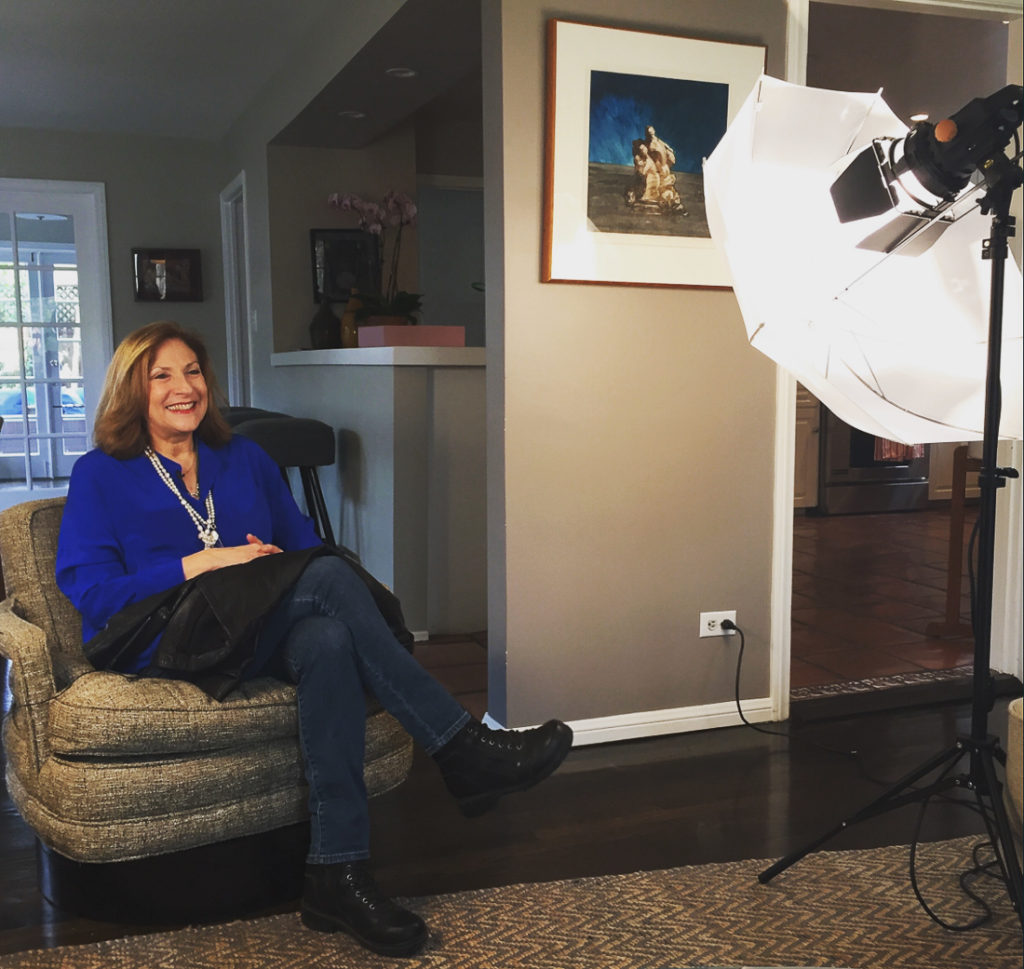
Another major player is Sarah Gavron, director of the films Suffragette and Brick Lane. A graduate of the National Film and Television School in London (Stephen Frears was one of her mentors) she is incredibly erudite. One of my favorite parts of her story is the fact she made nine short films before her ninth film changed the course of her career. Nine. Her perseverance really gave me hope, and I think it has also encouraged a lot of other women who need to see that you really can succeed if you just keep trying.
 Li Lu is another major interview in the film, and although she is not yet a household name, she’s well known here in Los Angeles for both the documentary she’s been working on for the last couple years about a Mosque that was burned down in Texas, and her narrative film There is a New World Somewhere. Li gives straight up and honest reflections on some of the more brutal realities of being a “woman” director, while never ceasing to remain optimistic and determined. I find a lot of people all over the sexual binary, of all races – really relate to her voice in the film, which is great because she is a female identifying woman of color. That her voice transcends race and gender is a win for both Li and the film, and shows it is the artist who is able to transcend differences and get to the truth of who we are as people.
Li Lu is another major interview in the film, and although she is not yet a household name, she’s well known here in Los Angeles for both the documentary she’s been working on for the last couple years about a Mosque that was burned down in Texas, and her narrative film There is a New World Somewhere. Li gives straight up and honest reflections on some of the more brutal realities of being a “woman” director, while never ceasing to remain optimistic and determined. I find a lot of people all over the sexual binary, of all races – really relate to her voice in the film, which is great because she is a female identifying woman of color. That her voice transcends race and gender is a win for both Li and the film, and shows it is the artist who is able to transcend differences and get to the truth of who we are as people.
It was important to me to not make this a film only about directors of notoriety but to show the breadth of experience and the myriad of ways one can make a living in this profession. However, I am very proud to have studio director and actor Betty Thomas (The Brady Bunch Movie, Private Parts), Television Director and DGA Board member Bethany Rooney ([executive producer] EP and director of Bull), Film and Television Director Kimberly Peirce (of Boys Don’t Cry), Oscar winning actor and trailblazing director Lee Grant, two-time Oscar winning documentarian and writer Sarah Kernochan, Ass-kicking American Masters documentarian Anne Makepeace, and the amazing Meera Menon (director of Equity) to name a few!
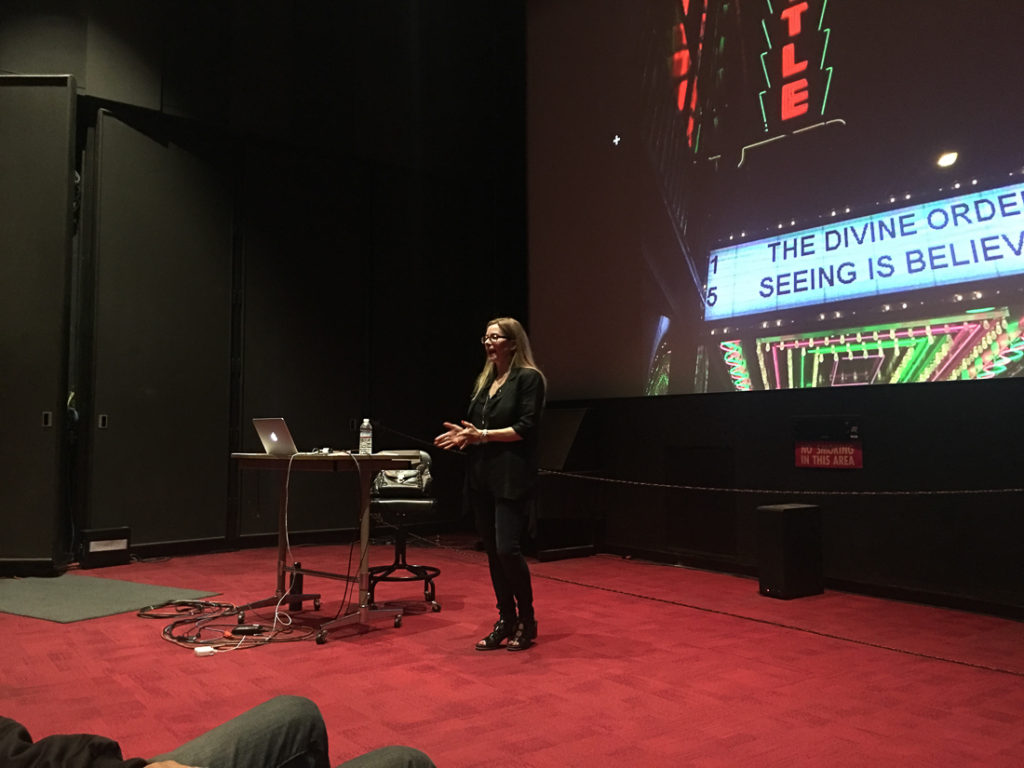
Kaylene: For anyone who would like to participate in this interview:
What was your experience on Seeing Is Believing? What drew you to this film?
Producer Li Lu: I loved being a part of this project. I was drawn to be a part of this film because I felt this discussion around inclusion in our industry could be expanded so much more, and be much more nuanced to include a diversity of experiences. As a director, I felt frustrations that I knew other women directors have shared, but these feelings were not expressed as commonly as others. I’m happy this film gave us a platform to discuss and share to a wider audience.
Producer Amanda Quinn Olivar: I remember so vividly the day Cady brought me onto the SIBWD production team. We were on the phone talking about it and, she was so passionate and determined. I knew immediately it was an essential project: a film that needed to be made with stories that had to be heard. Initially, I came onboard to expand our lineup of talent, with diverse and international filmmakers.
Producer Amanda Quinn Olivar: Each interview I found fascinating: particularly that of Georgian filmmaker Rusudan Glurjidze (House of Others), who said women filmmakers in her country have a stronger voice than the men, and also that filmmakers are more powerful than politicians . . . and of course hearing Lee Grant’s personal stories. One unique aspect is its focus toward education . . . for the next generation of filmmakers. Cady didn’t want this to be about excluding men or having a one-sided conversation; our doc is for everyone. It’s about learning, mentorship, and overcoming challenges.
Producer Jon Lindstrom: I’m a director, writer, actor and producer by proxy and I’m also married to Cady. I believed in her commitment to make this film. As a producer my function was to get done what Cady didn’t have time for or didn’t have a connection to. Make some phone calls, try to get a few people on board. For instance, I’d been directed by Joanna Kerns in a TV episode, got along with her well and reached out through her agent to see if she might sit for an interview. Happily she agreed and Cady loaded up her equipment and drove up to Santa Barbara to meet with her. I also acted as a sounding board.
Producer Kate Super: Wow! The storytellers on-screen are each incredible on their own, and the woven narrative paints a bigger picture of strong and creative women making the world their own. I was there from the beginning and saw many early cuts, but the final piece still inspires me!
Producer Kate Super: The opportunity to work with Cady was the first thing that drew me to this project. She is an incredible leader with strong vision and the stamina to deliver it! Women at the helm is a subject we’re all thinking about a lot these days, so working with Cady to share the stories of some of these incredible directors is a great way to participate in the public conversation in a positive way. Importantly, it also provides more than a conversation, but a real toolkit of inspiration for girls, women, and anyone who may be looking for ways to lead more effectively in a tough business.
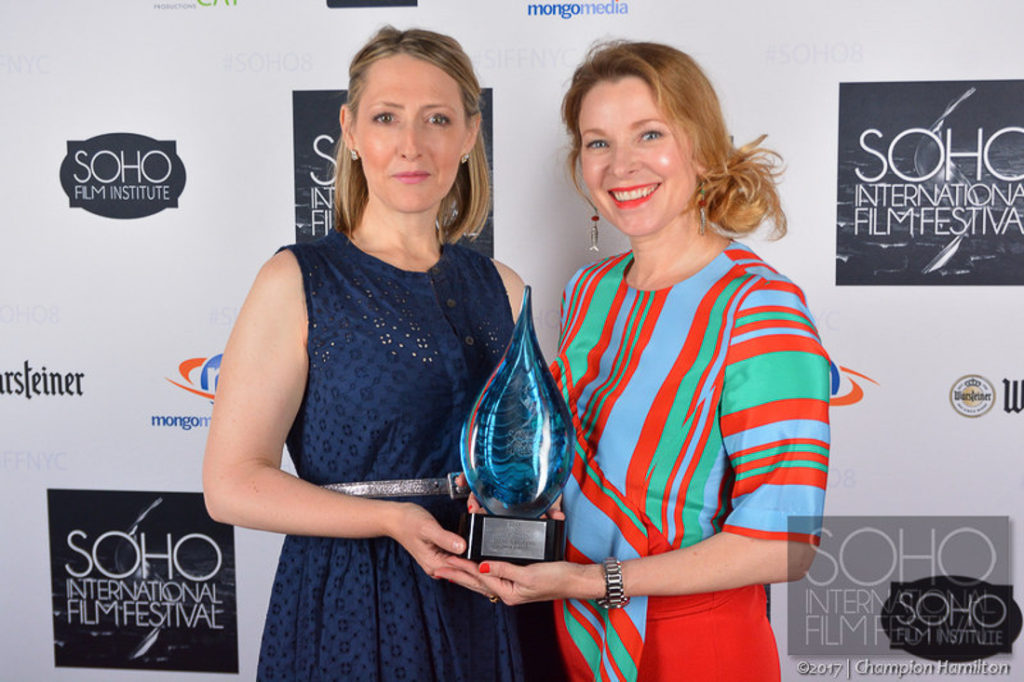
Kaylene: What were some of the most memorable moments on set?
Every interview was pretty massive but there were a few where I had to pinch myself. I grew up watching PBS and American Masters documentaries, so sitting and filming Anne Makepeace in her Connecticut home was pretty incredible. Shooting in the offices of John Wells on the Paramount lot was also a massive thrill. It was super fun sharing stories of working on “St Elsewhere” as a teenager with Bethany Rooney, who got her start on that show! We couldn’t believe we were both there at the same time and 30 years later we got to meet in such a neat way.
Kaylene: As a filmmaker, tell me about your background.
My professional experience as an actor has without a doubt influenced my understanding as a filmmaker because it’s given me enormous insight and compassion for the stress actors work under. I started as a child actor in 1979 and have since have done everything from studio films to Indie films, nighttime to daytime television, Off-Broadway to performance art. If you can act in it, I’ve probably done it. I discovered directing in my early 20s and fell in love but was highly discouraged from pursuing it. My mom actually made me promise her I wouldn’t, which I talk about in the film. So because I had a broader interest that went far beyond acting I spent a lot of years educating myself in all the arts, which helped me enormously as a filmmaker. I studied fine art painting at the School of Visual Arts in NYC, studied writing at the New School, and literature and (sneakily) film at NYU. I even studied music and made an album.
buy cialis professional generic https://yourcialisrx.com/cialis_professional.html over the counter
But nothing taught me more than the process of just rolling up my sleeves and making the work. Every one of the people in this film taught me something incredibly important about the process of directing, which I’ve done my utmost to put in the film itself.
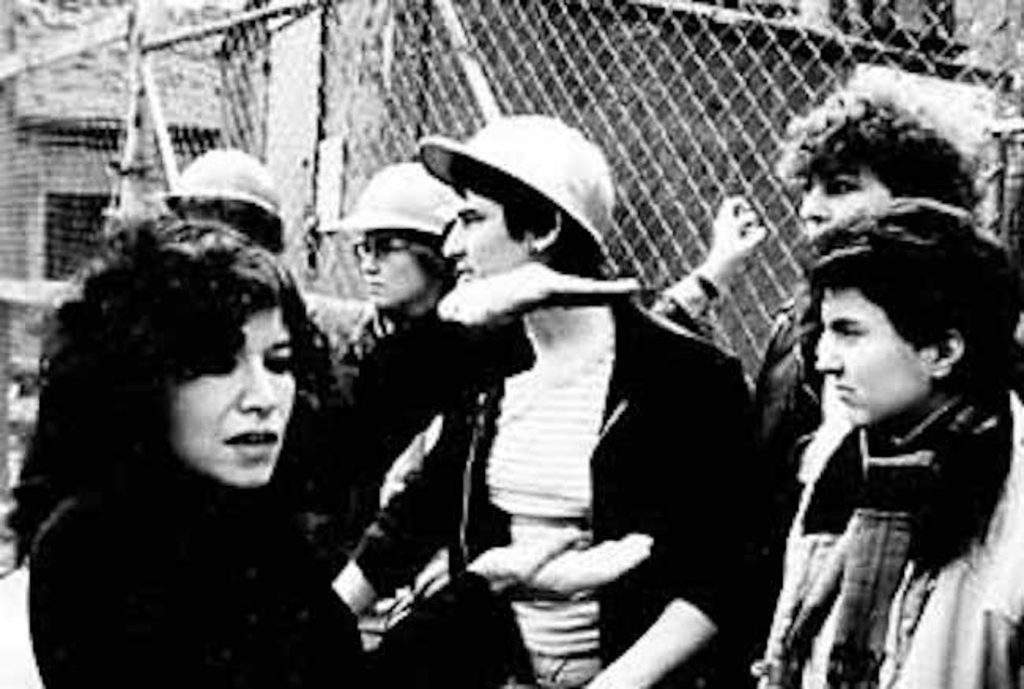
Kaylene: What would you say is unique about this film? Were there any challenging moments during production?
Producer Li Lu: I think Cady’s vision for the film was to gather a collection of narratives from women directors with a wide range of experiences and backgrounds. It’s a collection of stories from veterans and first-time directors alike. By speaking to so many women, she was excavating a deeper truth and understanding about what this moment is and can be. So I was really impressed by Cady’s search to find new voices to highlight in the larger discussion around gender parity.
Producer Kate Super: This is a story driven film made by, and about, women in the entertainment industry. We hear from women at all levels about what drew them to the work, the obstacles they have overcome, and how they are moving forward. It’s practical. It’s hopeful. And it’s fun.
Cady McClain: Finding this structure and committing to my desire to not follow the usual path was incredibly challenging, because it was going up against a lot of engrained ideas of what a lot of people think makes a film “correct.” However, I again and again hit moments where I had to say, “If I don’t make this film for me, then who is it for? If I don’t inspire myself, then the film is not what I set out to make.” So it simply had to be what it had to be: unique. I was definitely inspired by the concept of “The Heroine’s Journey,” which is much, much more cyclical and intuitive than the “Hero’s Journey.” If you don’t have access to a woman’s circle (which many women don’t) I think you will feel like you have just deep dived into a really special and unique experience that you could end up wanting to recreate in your own life.
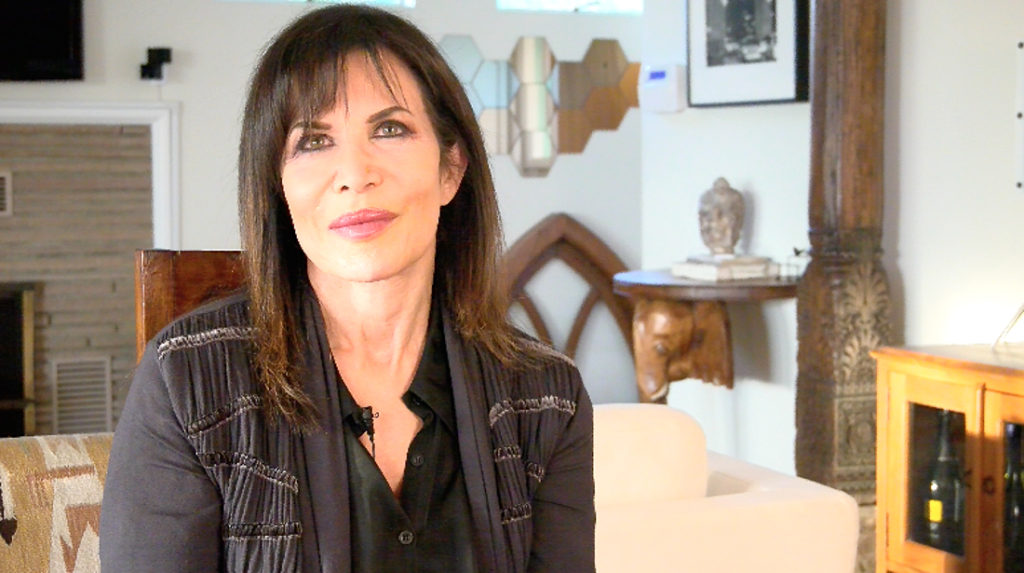
Kaylene: A female composer, nice! How was the score created? Musical inspirations?
Cady McClain: I also did not go a traditional route in terms of using a single composer to create a single score. I like a lot of different influences. When Li Lu came onboard as a producer and recommended composer Katy Jarzebowski, she brought some great material. As did Naima Ramos Chapman. I also have songs from the wonderful organization Triple Scoop Music, who I could not recommend more highly, from both male and female identifying artists. They have been wonderful to work with as an organization and could not recommend them more highly.
I also have to mention the animations and hand drawn titles by Xaviera Lopez, whom I discovered on GIPHY. I cannot imagine this film without her work. Her work exemplifies the feminine creative subconscious. Her visuals are so powerful and so important to this film. They speak beautifully what is so hard to put into words.
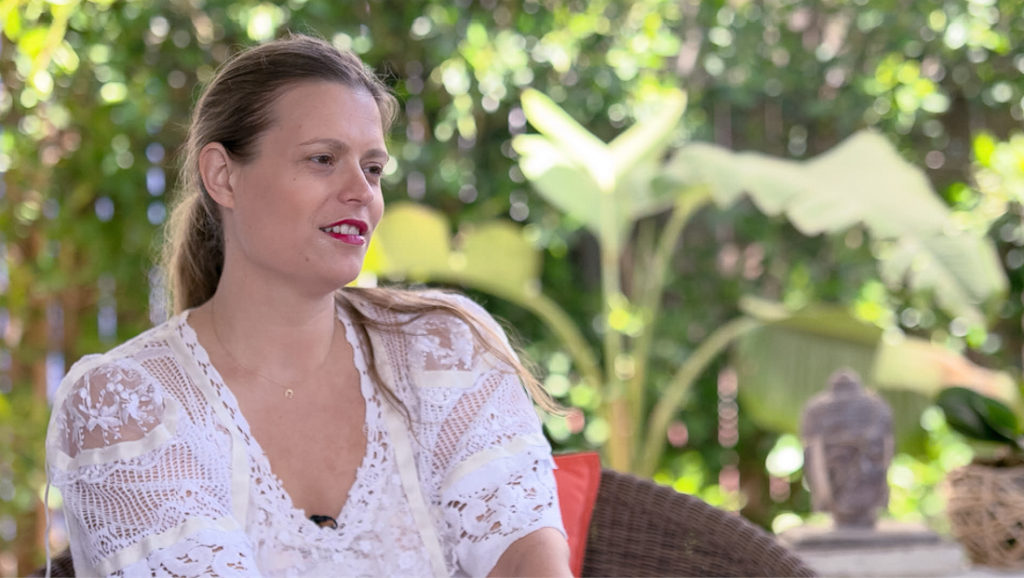
Kaylene: What were some of the obstacles? On your next project what might you do differently and what might you do the same?
Cady McClain: Documentaries are really a unique art form because they can take you on a long journey over an incredibly long period of time. It’s brutally difficult work that takes an enormous amount of persistence. I think there is no way to say “I wish I’d done this differently” on this film, because everything I did, every step, brought me another level of learning and I don’t regret what I learned. It was invaluable. You can’t buy this kind of education, you just have to go about acquiring it one way or the other. In order to get the wisdom from experience, you have to have the experience, and that is not always easy but it is invaluable.
Kaylene: What advice could you give to a first-time director/producer/composer/etc..?
Cady McClain: My first and foremost advice would be “do whatever you can to keep making the work and keep learning about the work.” Film and television has a long and glorious history worldwide. Make it your business to learn that history, because not only will it be personally enriching, it’s also where you will find answers to the question, “What kind of artist am I?” Maybe it’s art films, maybe its series television. Maybe it’s docs or maybe it’s web series that break genres, who knows? But you have to expose yourself to all kinds of work to know where your niche is in this world. I also highly recommend looking into the website Directed by Women and checking out what Barbara Ann O’Leary is watching, for example. She has an incredibly rich understanding of films by women and I deeply admire her commitment to helping push awareness of some of the amazing work that is there to be seen.
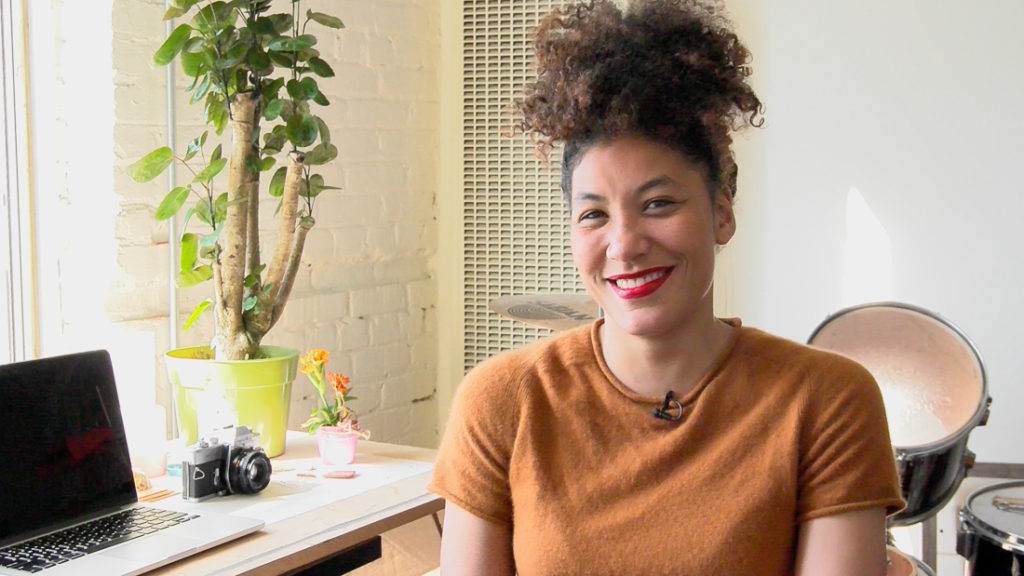
Kaylene: Final last words: Please elaborate if there is anything you didn’t mention.
Cady McClain: Along the way, I met other filmmakers who were also making films about female directors. My sisters in this experience are Amy Adrion of Half the Picture and Jennifer Dean of The Second Sex and The Seventh Art (in post). Many have expressed it would be a “no-brainer” for us to collaborate but that began to suggest that there was only room for one film on the topic. It’s my opinion we all, for our own personal reasons, really needed to steep ourselves in these women’s stories so that we would be hit by them hard and forever changed. I also think we all wanted to prove that there is room for more than one film on this subject, as there is room for more than one perspective on the issue. The subject is so broad and has been so minimized that it’s maddening, frankly. So how CAN there be only one film on the topic? There are certainly places were we will cross in terms of touching on history or touching on major players currently in film or television, but I think our approaches have all been deeply personal and individualistic, and therefore totally and completely relevant. I encourage everyone to embrace and celebrate them all.
A Bit about Cady McCLain:
1) 2018 Heartland International Film Festival Premiere Seeing is Believing: Women Direct 2017 AWC; 2) International Matrix Award-winner for work pertaining to raising awareness about female directors; 3) Winner for Best Feature Film SOHO Intl. Film Festival: Seeing is Believing: Women Direct; 4) Best Documentary Ridgewood Int. Film Festival: Seeing is Believing: Women Direct; 5) Two-time Emmy-nominated Director (2017/2018): Venice the Series ; 6) Winner Best Short Narrative Film/Best Actress in a Short Film Philadelphia Independent Film Festival: Butterflies; and 7) Two-time Emmy winner, six-time nominated actor: All My Children and As the World Turns.
Screening: Friday, April 26, 2019, 9:30pm A ‘WOMAN’S PLACE’
Purchase Tickets: https://www.laemmle.com/films/45710

